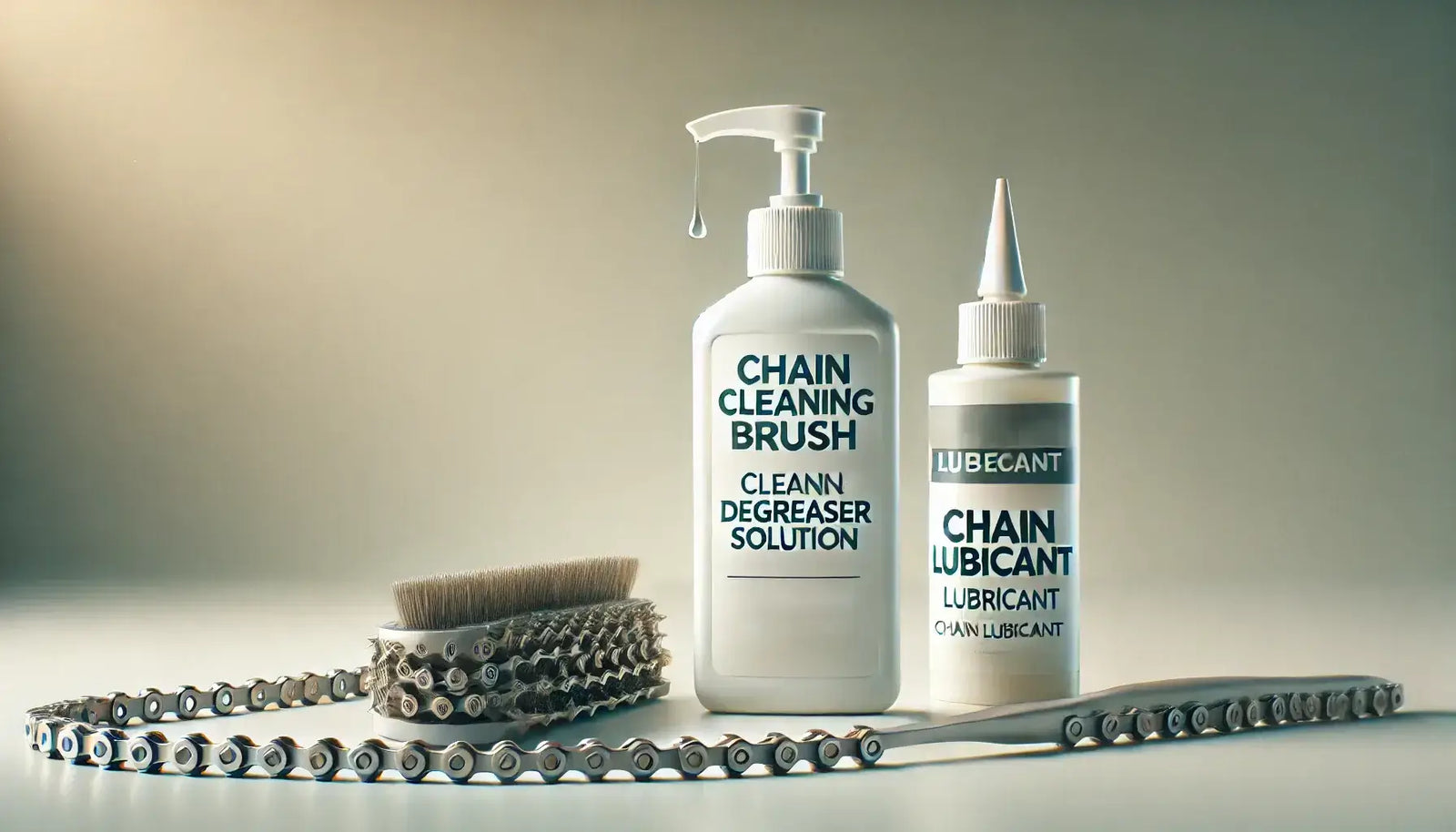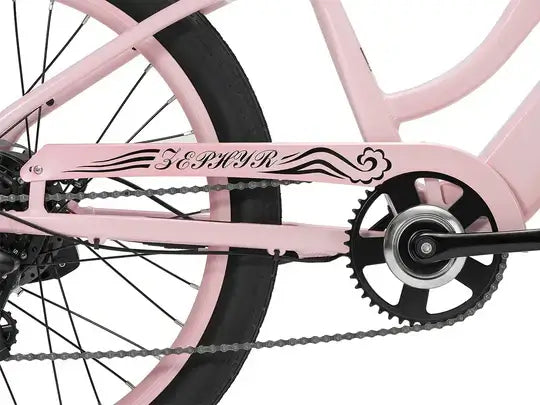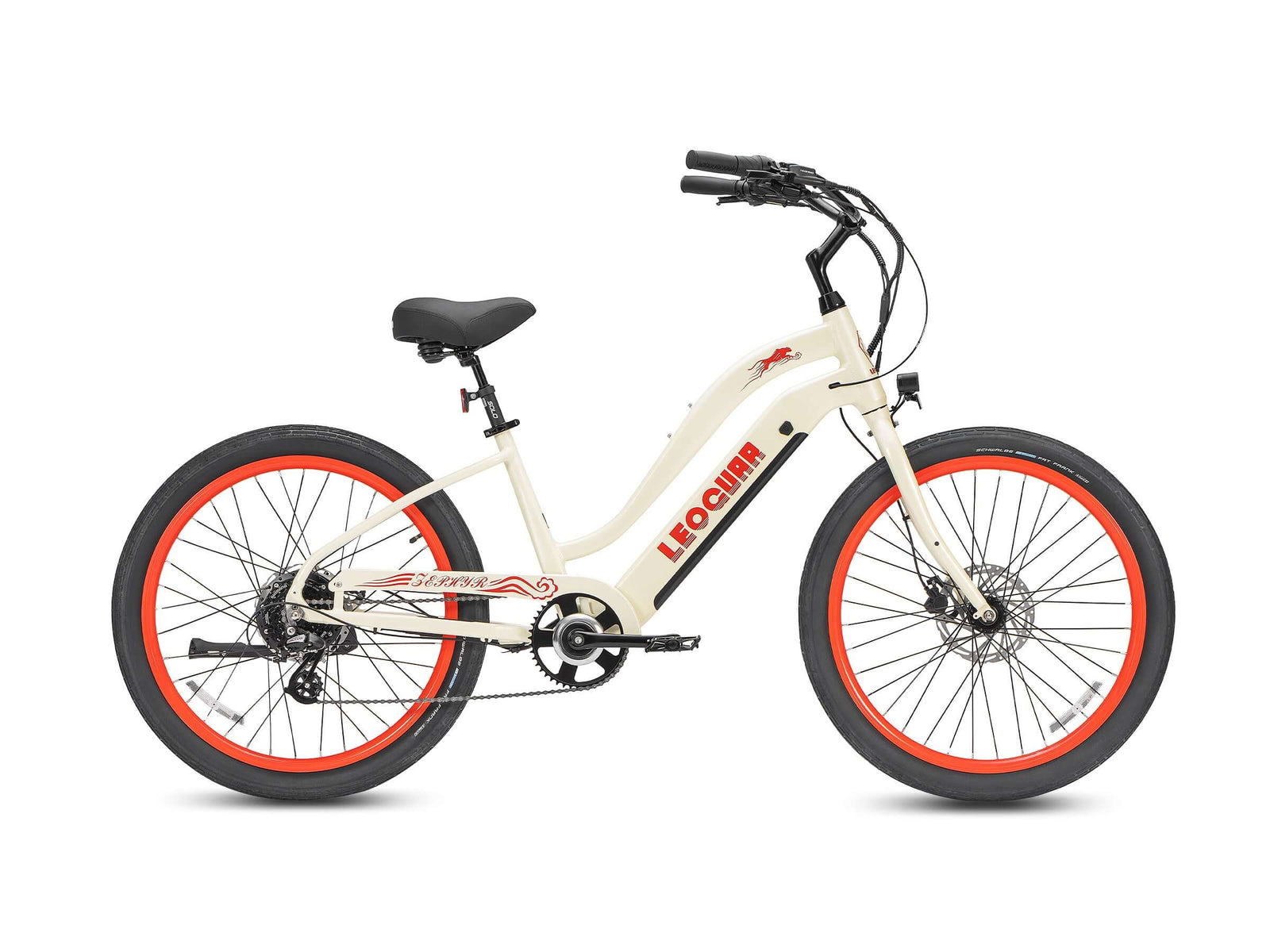
How to Lube Ebike Chain: Complete Guide for Peak Performance
Introduction
Your ebike can make two different sounds. One is the quiet hum of a well-maintained machine, and the other is the loud grinding noise of a chain that needs help. That grinding sound means your expensive bike is wearing out fast. Ebike chains work much harder than regular bike chains because the motor creates powerful force. If you don't take care of your chain, you'll face poor performance and costly repairs.
This guide will teach you everything you need to know. You'll learn how to pick the right oil for your chain, clean it properly, and apply the oil like a professional mechanic does. Learning this simple skill will give you smoother rides, make your parts last longer, and save you money on bike shop visits. We'll explain why ebikes are different from regular bikes, give you step-by-step instructions, and share expert tips to help you avoid common mistakes.
Why Ebike Chains Are Different
An ebike chain looks like a regular bike chain, but it has a much tougher job. The motor creates constant, powerful force that puts extra stress on every part of the chain. Understanding this difference is the first step to taking proper care of your chain.
The Power and Force Factor
When you pedal a regular bike, your power goes up and down with each pedal stroke. An ebike motor delivers smooth, constant power that never stops. Think of it this way: riding a regular bike is like walking with a backpack, but riding an ebike is like using that backpack to pull a heavy trailer. The constant pulling puts much more stress on the chain.
Studies show that ebike chains can experience 2-3 times more force than regular bike chains. This heavy load makes every link, pin, and roller wear out much faster if the chain doesn't have the right protection from good oil.

What Happens When You Don't Take Care of Your Chain
Ignoring your ebike chain creates a series of expensive problems. A dry or dirty chain doesn't just make noise - it destroys your bike's parts. The first problem is that parts wear out too fast, as a dirty chain acts like sandpaper grinding away metal from your chain, gears, and chainring.
Poor shifting comes next as worn parts make gear changes slow and unreliable. You might experience "ghost shifting" where the bike changes gears by itself, or frustrating delays when you try to shift. A dirty chain also reduces your battery range because friction makes the motor work harder to go the same speed. Finally, you'll face costly repairs since a bottle of good chain oil costs just a few dollars, but replacing a worn chain, cassette, and chainring can cost hundreds of dollars plus labor.
Choosing the Right Oil
Bike shops have walls full of different chain oils, and picking the right one can be confusing. For an ebike, choosing the correct oil is very important because the high-power motor environment means not all oils work the same way. Your choice should depend on the weather you ride in and what your motor demands.
Main Types of Chain Oil
Chain oils fall into several categories, each with different strengths and weaknesses. The right one for you depends mainly on the weather conditions where you ride.
| Oil Type | Best For (Conditions) | Pros | Cons |
|---|---|---|---|
| Dry Oil | Dry, dusty, summer conditions | Stays very clean, does not attract dirt | Washes off easily in rain, needs frequent reapplication |
| Wet Oil | Wet, muddy, winter conditions | Very durable, water-resistant, long-lasting | Attracts dirt and grime, creating a "gunk" that needs cleaning |
| Ceramic Oil | Performance riders, mixed conditions | Creates a very low-friction coating, very durable | More expensive, requires a perfectly clean chain for application |
| Ebike-Specific Oil | All conditions, high-power use | Made for extreme pressure, very durable, often has rust protection | Usually the most expensive option |
Our Top Recommendation
For most ebike riders, we recommend starting with an ebike-specific oil or a high-quality wet oil. The main reason is that these oils last longer under the high pressure and strong forces that are unique to ebike chains. Even if you ride in dry conditions, these oils create a strong protective film that prevents metal-on-metal wear under motor load.
What to Avoid: The Oil Blacklist
Knowing what not to use is just as important as knowing what to use. Using the wrong product can be worse than using nothing at all. Standard WD-40 is the biggest mistake people make since it's a solvent and water remover, not an oil for chains, and it will strip your chain of any existing protection.
Motor oil is designed for high pressure but is too thick for bike chains. It will attract huge amounts of dirt and sand, quickly forming a grinding paste that will destroy your chain and gears. Household oils like 3-in-1 oil are not designed to handle outdoor conditions or the high-pressure contact points inside chain rollers, so they break down and wash away almost immediately.
The 5-Step Oil Application Guide
With the right oil in hand, it's time to do the job correctly. This process is simple, but being precise is important. Following these five steps will make sure your chain is perfectly oiled every time, giving you the best performance and longest life.
Step 1: Gather Your Tools
Getting ready makes the job fast and clean. Before you start, collect these items: your chosen chain oil, bike-specific cleaner (citrus-based formulas work well and are gentler), a set of stiff brushes or a chain cleaning tool, several clean rags that won't leave lint, rubber gloves to keep your hands clean, and a bike repair stand if you have one.
Step 2: The Deep Clean
You can never oil a dirty chain properly. Putting new oil over old, dirty gunk just traps the dirt inside and makes wear worse. A clean chain is required for a good oil job.
The most effective method is to first shift the bike into a middle gear on the back. This creates a straighter chain line, making it easier to reach all the links. With the bike in a stand, apply the cleaner generously to the chain while slowly turning the pedals backward. Let it sit for a minute, then use your brush to scrub all four sides of the chain, paying special attention to the rollers - the small cylinders between the chain plates - since this is where dirt loves to hide.
You'll see black grime start to drip away. If the chain is very dirty, use a chain cleaning tool for deeper scrubbing. Rinse with a gentle stream of water if needed, but be careful not to spray water into bearings. Finally, dry the chain completely with a clean rag since a dry chain is critical before applying oil.
Step 3: Precise Application
The goal is to get the oil inside the chain rollers, not all over the outside. Using too much oil is a common mistake that turns your chain into a dirt magnet. We use the "one drop per roller" method by positioning the oil bottle's tip over the bottom part of the chain.
As you slowly turn the pedals backward, apply a single, small drop of oil directly onto the top of each chain roller. Focus on being precise by aiming for the seams where the inner and outer plates meet the roller. Applying oil here allows it to get into the high-friction areas where it's needed most.
Step 4: Let It Soak
Once you've applied a drop to every roller, don't wipe it off right away. Continue to turn the pedals backward slowly for another 20-30 seconds to help work the oil deep into the pins and bushings inside each roller.
Now, let the bike sit for at least 5-10 minutes for wet or dry oils, or potentially longer for ceramic oils (always check the instructions on the bottle). This waiting time is very important because it allows the liquid carrier in the oil to evaporate, leaving behind the pure lubricating film where it matters most.
Step 5: Wipe Off the Extra Oil
This is the most important step that separates beginners from experts, and it's the one most people skip. Any oil left on the outside of your chain serves no purpose other than attracting dirt. Take a clean, dry rag and lightly grip the bottom part of the chain with the rag while turning the pedals backward a few full rotations.
You should see dark excess oil coming off onto the rag. Continue wiping until the outer plates of the chain look clean and almost dry. Don't worry - you won't remove the important oil since the oil you need is already inside the rollers, protected from dirt and weather.

Expert-Level Problem Detection
Once you start paying attention to your chain, you can learn to tell its health by sound and feel. This goes beyond simple maintenance and helps you catch small problems before they become big, expensive ones. Your chain talks to you through different sounds that indicate different problems.
Listening to Your Chain
A persistent, high-pitched squeak, especially when you pedal, is the classic sound of a dry chain. The metal-on-metal friction causes this noise, and it's your immediate signal to clean and oil the chain. A low, gritty, or crunchy sound means your chain is full of dirt, and the noise is literally the sound of sand and grit being ground between your chain and gears.
You must perform a deep clean before you add any oil. If you hear a consistent click with every rotation or the chain seems to jump on a gear, it could indicate several issues like a stiff link, a bent part, or a sign that your chain and gears are worn out and need replacement.
The Stiff Link Test
A "stiff link" is a chain link that doesn't bend freely like the others. It can cause skipping and rough pedaling, and you can find one with a simple visual and feel test. With the bike in a stand, turn the pedals backward very slowly and watch the chain as it moves through the two small wheels on the rear gear changer.
A healthy chain will bend smoothly around them. A stiff link will resist bending and you'll see it "jump" or straighten out suddenly as it passes over the wheel. Once you've found the problem link, grab the chain on either side of it and gently move it side-to-side. This motion will often free up the link, but if it stays stiff, a drop of oil worked directly into it may help.
Common Mistakes to Avoid
Even with good intentions, it's easy to make mistakes. Here are the most common errors we see and how to avoid them. Using too much oil is a big problem since more is not better, and drowning your chain in oil creates a sticky mess that attracts far more dirt and grit.
Oiling a dirty chain is another major mistake. As mentioned, this traps existing dirt inside the rollers, creating a perfect environment for wear. Always clean before you oil your chain.
Don't forget to clean the gears and small wheels on your gear changer. While the chain is the main focus, these parts also collect gunk, so use your brush and cleaner on them at the same time you clean your chain. Finally, never use household oils or WD-40 since using a product not designed for the high-pressure, outdoor environment of an ebike chain will leave it unprotected.
Frequently Asked Questions
There's no magic number for how often to oil your ebike chain since it depends heavily on your riding conditions. A good rule is to check and oil every 150-200 miles, but you should always clean and oil your chain right after any ride in wet, rainy, or muddy conditions.
You can use regular bike chain oil on an ebike, but ebike-specific oil is better. Regular high-quality oils will work, but ebike-specific formulas are made with extra pressure additives to handle the higher, more constant force from the motor. You don't need to remove the chain to clean it for routine maintenance since using good cleaner, brushes, and chain cleaning tools is enough for 99% of cleaning jobs.
The best guide for when to oil your chain is sound - if you can hear your chain making noise, it needs attention. Removing the chain is typically only done for very deep cleaning or when replacing parts.
Conclusion
Taking care of your ebike chain is one of the simplest, cheapest, and most effective things you can do to protect your investment. It's not just about making a noisy bike quiet - it's about preserving the entire gear system, maximizing your battery's range, and ensuring smooth, reliable shifting when you need it most. By understanding the unique stresses your ebike chain faces, choosing the right oil for your conditions, and mastering the five-step clean-and-oil process, you have all the knowledge you need.
A few minutes of regular maintenance will reward you with thousands of miles of smooth, efficient, and enjoyable riding. Your ebike and your wallet will thank you for taking the time to do this simple but important job.









































Leave a comment